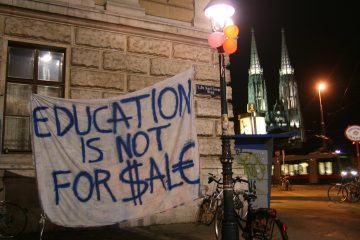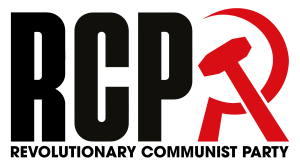Monday marked the 105th anniversary of the October Revolution. These 10 days shook the world and spurred on proletarian movements in countries far and wide. Over a century later and the Russian Revolution one of the most distorted events in history. The international bourgeois work actively to confuse and lie about the Russian Revolution. As Marxists, we must take a more serious approach. What is the real history of the revolution and how can we replicate it today?
The Russian revolution is the greatest event in human history. For the first time, the working masses, stood behind the Bolshevik party, overthrew their Tsarist and capitalist masters and began the work of establishing a better form of society, based on worker’s power.
The ruling classes of all countries have poured heaps of slander on this great event and the people who led it, through their media, books, schools and universities. They cannot allow the truth to be revealed and must resort to distortions and lies, for example, that the October revolution was a coup, or even that Lenin was a German agent.
As serious revolutionaries we must therefore uncover the truth. We must learn about the history of the Russian revolution to arm us for the successes and victories we strive for today.
Lenin and Trotsky
The February Revolution of 1917 saw the overthrow of Tsarism and the installation of the Provisional Government, led by Kerensky. At the same time, the working class and soldiers began to establish their own organs of power – known as ‘soviets’ (i.e. workers’ councils).
Returning from exile, Lenin published the April Theses, which explained his position on the new government.
Recognising the Provisional Government as capitalist, Lenin argued that the working class must not have any trust in this new regime. Since it was connected by a thousand threads to the capitalist class, landowners, and imperialists, it would be unable to solve any of the pressing issues of the revolution. And sooner or later, it would move against the working class to crush the revolution.
Lenin therefore took up three of the most urgent demands of the masses in his slogan ‘peace, bread, and land’. But crucially he explained that for any of these issues to be solved, all power had to be taken by the working class through the soviets, and the revolution had to be spread internationally.
Incidentally, Lenin’s perspectives for the revolution now corresponded with those of Trotsky, and his theory of the ‘permanent revolution’. Trotsky would soon join the Bolsheviks, and play a leading role in the revolution, second only to Lenin.
Lenin’s April Theses showed the firmness of his ideas, matched with a complete flexibility in tactics. The Bolsheviks were in fact a small minority in the soviets, with the reformist Mensheviks and petit-bourgeois Social Revolutionaries having the majority of influence over the workers.
Why then call for “All power to the soviets”?
Lenin was never in favour of giving unprincipled concessions to the bourgeoisie or subservience to the liberals and reformists. The point was to put pressure on the Mensheviks and SRs to take power themselves, and expose the fact that their leaders had no interest in this. In doing so, the Bolsheviks helped undermine their influence in the soviets.
The tactic proved absolutely correct. Over the course of months of patient explanation to the workers on the limitations of their leaders, the Bolsheviks won huge influence in the Soviets, and by June it was clear that they would be the decisive factor in the events to follow. In this way, the revolution was won far before the insurrection in October.
‘Bloodthirsty’ Bolsheviks?
The Provisional Government continued to be incapable of solving the problems of war, land distribution and poverty facing the people of Russia. Instead of pulling out of the First World War, Kerensky launched a catastrophic offensive against the German army, leading to massive Russian losses.
Given the discontent that had been building over the previous months, this caused the most radical workers and soldiers in Petrograd to come out onto the streets and demand the overthrow of the Provisional Government, with Soviet rule in its place.
While the Bolsheviks naturally supported these aims, they were actually forced to hold back the advanced workers from starting the insurrection too early. Had they moved to insurrection before the rest of their class was ready, their insurrection would have been drowned in blood, and the revolution would have been jeopardised.
Far from being bloodthirsty warmongers, Lenin and the Bolsheviks wanted the revolution to be as peaceful as possible, by using the overwhelming strength of the Russian working class to dissuade counterrevolutionary violence. The responsibility for the violence of the Civil War that followed the October revolution should be placed solely on the counter-revolutionary White armies, and the imperialist European powers, which invaded the young Soviet Russia to crush the revolution.
Internationalism
Since capitalism is an international system, with countries politically and economically dependent on each other, socialism must also be international in order to be successful. Lenin never believed that ‘socialism in one country’ would ever be possible, but was instead an uncompromising internationalist, exactly as Marx and Engels were.
Following the shocking betrayal of the socialist Second International, Lenin called for the creation of a third international, based firmly on the ideas of Marxism and the methods of Bolshevism.
In The Permanent Revolution, Trotsky explained that the Russian Revolution would give an impulse to revolution throughout Europe, and that socialism in Russia would not be possible unless these European revolutions were successful.
History has proven Lenin and Trotsky completely correct. The Russian Revolution was followed by revolutionary events across Europe, in Hungary, Germany, Italy and even Britain, in the 1926 General Strike. The failure of these revolutions left Soviet Russia economically and politically isolated from the international working class, which allowed a layer of bureaucrats to demolish workers’ democracy, and consolidate their power behind their representative Stalin.
The revolutionary party
The decisive difference between the revolutions in Russia and the rest of Europe was the existence of a centralised, theoretically steeled, revolutionary party. By October, the Bolsheviks had the experience of two revolutions, and nearly two decades of explosive class struggle in Russia, which allowed them to draw the correct conclusions on theory and tactics.
By comparison, the Communist parties in Germany, Italy, Hungary and Britain were weak and inexperienced. Thisled to the opportunities for socialist revolution in Europe being squandered, or betrayed by the existing reformist leaders
It is very difficult to build the revolutionary party during the heat of struggle, where events can move at lightning speed. That is why it’s so important to educate and grow before such mass movements take off. Only due to decades of patient and courageous work, from the birth of Russian Marxism, to the First World War, were the Bolsheviks able to lead the working class to victory in October.
Join the Marxists!
A pre-revolutionary situation of intense class struggle, similar to that which faced the Bolsheviks, now stands before us. That is why it is more important than ever to study history and theory, and build the forces of Marxism in Britain and around the world. As Lenin said, ‘without revolutionary theory, there can be no revolutionary movement.’
That’s why the MSF is part of the International Marxist Tendency, a revolutionary organisation fighting in the student and labour movements around the world for Marxist ideas, and a socialist future for humanity.
Join us!



